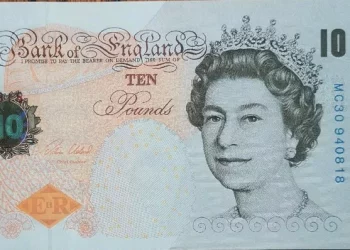The conversion of currency is a crucial aspect of international finance, impacting travelers, businesses, and investors alike. The exchange rate between the Euro (EUR) and the US Dollar (USD) is particularly significant due to the economic stature of both the Eurozone and the United States. Understanding the nuances of this exchange rate can provide valuable insights into the global economy.
Current Exchange Rate
As of the latest data, the exchange rate fluctuates daily based on market conditions. At the time of writing, 1 Euro equals approximately 1.08 US Dollars. Therefore, 100 Euros would convert to 108 US Dollars. However, this rate is subject to change due to various influencing factors.
Conversion Calculation
The process of converting Euros to US Dollars involves a straightforward calculation, but it’s essential to use the most up-to-date exchange rate to ensure accuracy. To convert 100 Euros to US Dollars:
100EUR×1.08USD/EUR=108USD
This formula highlights the simplicity of currency conversion but also underscores the necessity of accurate and current exchange rates.
Factors Influencing Exchange Rates
Exchange rates are influenced by multiple factors, making them volatile and subject to change. The primary factors include:
Economic Indicators: Key economic indicators such as GDP growth rates, employment statistics, and manufacturing output significantly impact exchange rates. A robust economy often strengthens the currency.
Interest Rates: Central banks, like the European Central Bank (ECB) and the Federal Reserve (Fed), influence exchange rates through monetary policy. Higher interest rates in a country can attract foreign capital, increasing demand for that currency.
Political Stability: Countries with stable governments and minimal political risk tend to have stronger currencies. Political turmoil can lead to a depreciation of the currency.
Market Speculation: Traders and investors in the forex market speculate on future movements of currencies, impacting demand and supply dynamics.
Trade Balances: A country with a trade surplus (exporting more than it imports) usually sees its currency strengthen due to higher demand for its goods and services.
See Also: 72 Euros in Pounds
Forecast and Trends
Predicting exchange rate movements is complex, involving analysis of economic conditions, geopolitical events, and market sentiment. Recent trends indicate a strengthening US Dollar against the Euro, driven by the Federal Reserve’s interest rate hikes to combat inflation. However, any forecast must consider potential changes in economic policies, geopolitical tensions, and unforeseen global events.
Financial Advice
For individuals and businesses dealing with currency exchange, several strategies can mitigate risk:
Hedging: Financial instruments such as futures contracts and options can protect against unfavorable exchange rate movements.
Diversification: Spreading investments across different currencies can reduce exposure to exchange rate volatility.
Regular Monitoring: Keeping a close eye on exchange rates and economic news can help in making informed decisions.
Expert Consultation: Consulting with financial advisors or currency specialists can provide tailored advice based on individual or business needs.
Legal and Tax Implications
Currency exchanges can have significant legal and tax implications, particularly for businesses and investors:
Reporting Requirements: Cross-border transactions must be reported to tax authorities. Failure to comply can result in penalties.
Tax on Gains: Currency gains are often subject to capital gains tax. It’s important to understand the tax treatment in both the home country and the foreign country.
Regulatory Compliance: Different countries have varying regulations regarding foreign exchange transactions. Compliance with local laws is crucial to avoid legal complications.
See Also: 76 Euros in Pounds
Economic Indicators
Understanding economic indicators is vital for comprehending exchange rate movements:
GDP Growth: Higher GDP growth rates often lead to stronger currencies.
Inflation Rates: Lower inflation generally supports a stronger currency, as purchasing power is preserved.
Employment Data: High employment rates indicate a healthy economy, bolstering the currency.
Trade Balance: A positive trade balance usually strengthens a currency due to higher demand for exports.
Global Market Impact
The exchange rate between the Euro and the US Dollar has a significant global impact:
Trade: It affects the cost of imports and exports between the Eurozone and the US, influencing trade balances.
Investment Flows: Investors seeking better returns may shift capital between the US and Europe, impacting both economies.
Tourism: Exchange rates influence travel costs, affecting the tourism industry.
Corporate Earnings: Multinational companies report earnings in different currencies, and exchange rate fluctuations can impact their profitability.
Conclusion
The exchange rate between the Euro and the US Dollar is a critical metric in the global economy, influencing trade, investment, and financial decisions. While the current rate can be easily calculated, understanding the factors that drive exchange rate movements requires a deeper analysis of economic indicators, political stability, and market dynamics. For those engaging in currency conversion, whether for travel, business, or investment, staying informed about current trends and seeking expert advice can help navigate the complexities of the forex market.
In an interconnected global economy, the ripple effects of exchange rate fluctuations are far-reaching, underscoring the importance of this seemingly simple conversion in the broader financial landscape. As economic conditions evolve, staying abreast of these changes can provide a strategic advantage in managing financial exposure to currency risk.
Related Topics:



























